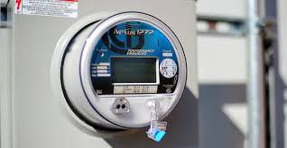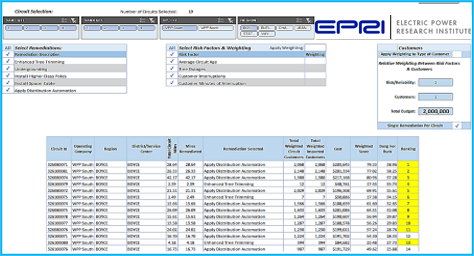2023 Analytics Project Tasks
Planned 2023 Research
- This project establishes the value and use of asset performance data, supports the facilitation and the curation of industry-wide asset data, advances the understanding of methods that better inform reliably and resilience decisions, and conducts research with members to understand how new data science tools and techniques such as artificial intelligence, natural language processing, and synthetic data can be leveraged for distribution assets and systems.
- The results of this research can help inform resource allocation decisions and other fleet and system performance tasks and provide utilities with new knowledge and data vital for effective asset and reliability management.
- Research results are transferred to members through scientific reports, easy-to-use software tools, reference guides, webcasts, and workshops.
- The project includes a number of interrelated and complementary tasks (described below):

Definition and Data Models for Industrywide Overhead and Underground Distribution Asset: This task develops and updates the underlying data models for efficient and effective extraction, transfer, and loading of test, diagnostics, performance, and failure data for use in industry and utility database applications and performance analytics. Data models for distribution transformers (including surface-mount, underground, and network), underground cables, and wood poles will be reviewed. This task could also work with project funders to develop a comprehensive prioritized list of additional overhead and underground distribution assets for which data models may be developed in future years.

Collection and Analysis of Industrywide Overhead and Underground Distribution Performance and Failure Data: This task compiles and analyzes historical failure and performance data on overhead and underground distribution assets in a common format, using information gathered from participating utilities. Efforts are underway to define and develop metrics and processes for mining and analyzing these data to develop insights that could lead to better informed decisions regarding maintenance program development; task and timing selection; benchmarking comparison among utilities and breaker makes and models; replacement decision support and specification and selection of new distribution system assets.

Analytics for Fleet Management of Overhead and Underground Distribution Assets: This task investigates and develops performance assessment analytics for overhead and underground distribution assets, such as wood poles, underground cables, and distribution transformers (including surface-mount, underground, and network). The analytics are developed using data mining and analysis of periodic inspection results; failure modes and degradation research (carried out in other asset-focused projects in P180); subject matter expert experience; and other inputs, such as family, make, model, manufacturer, and operating environment. The research focuses on enhancements to algorithms and analytic methods for assets such as wood poles, underground cables, and distribution transformers.

Reliability and Resiliency Metrics and Analytics: Historical approaches to managing reliability and resiliency have included cyclical approaches and system-wide investment in hardening and other improvement options. This multi-year research task aims to use data analytics along with both traditional and new data sources to evaluate reliability and resiliency enhancement opportunities over the lifecycle of the power systems of interest. This unique approach will consider expected worst case severe weather exposure, climate change and other risk factors, thereby enabling utilities to identify and target investments that will yield benefits in the specific areas where the improvements will be the most impactful. Data for the analysis may come from multiple sources, including the historic storm event records, geospatial informatics systems, smart meter data, inspection data, and others. The analytics approaches used in this research effort enable members to understand historically successful leading practices and how new data sets can bring new insights to the reliability and resiliency challenge. This work will continue to curate successful analytics use cases and create documents that members will be able to leverage to replicate the concepts on their own systems.

Evaluating Costs and Benefits of Reliability/Resiliency Improvement Options: Investments in reliability and resiliency improvement can be difficult to quantify and to cost justify if utilities lack good information about the anticipated benefits. In prior years, EPRI research focused on developing and demonstrating methodologies for evaluating cost/benefits in support of reliability and resiliency improvement investments for specific assets. For 2023, EPRI will expand the focus to avoided cost analytics. The avoided cost analysis focuses on creating useful ratings for storm intensity and associated recovery costs. With these parameters well defined and documented, future reliability and resilience improvements can be quantified in terms of the investment versus the avoided future recovery costs. The work will develop replicable methods that utilities can leverage to guide their investment strategies and better inform the expected benefits to customers.

Visual Analytics and Insights: This multi-year effort defines and prioritizes the use cases where geospatial analysis of distribution assets could be further developed into useful and insightful decision support outcomes. Specific opportunities leverage asset performance data, SCADA information, smart meter data and circuit by circuit power flow performance data. The prior year work demonstrated how this could benefit distribution automation analytics. In 2023 this research will continue to prioritize and conceptualize the most beneficial distribution asset use cases that can be developed into geospatial story maps that visually represent the potential for enhanced asset analytics. All insightful and useful outcomes will be shared with project members by way of a Geospatial Analytics and Insights Guidebook for distribution assets along with training opportunities. The intent is to keep this guidebook current and to grow the number of use cases annually.
Emerging Data Science Tools and Technologies (AI/ML/SD): This task investigates leading-edge R&D opportunities in the data science space with a focus on applicability to distribution system assets and reliability/resilience. Examples of the research include opportunities to leverage Artificial Intelligence (AI), Natural Language Processing (NLP) and the emergence of Synthetic Data (SD). Project set members benefit from this work by gaining first looks at each leading-edge proof of concept and first opportunities to host pilot implementations. The project members provide input and prioritization of new and emerging opportunities to better understand risks associated with system reliability and resilience performance. This prioritization has resulted in directives to investigate, AI use cases such as AI enabled at risk tree analytics leveraging satellite imagery, NLP applications for analyzing unstructured data, fault event electrical signature databases, and new applications of smart meter data. In 2023 the research outcomes will be added to the annual emerging data science tools and technologies guidebook.

Synthetic Data for AI Training: The effectiveness of AI systems is dependent on the quantity and quality of the datasets used for training. This can present difficulties for distribution applications, as the failure rate is relatively low compared to the size of the total population, which can result in difficulty building a data set that is large enough to train a model effectively while remaining representative of the population. This multi-year research aims to investigate the options, approaches, and effectiveness of using synthetic data to augment real-world training data. This includes data generation as well as evaluation of AI model effectiveness for models trained using synthetic data.
For more information on the 2023 plan for asset, reliability & resiliency analytics, contact Doug Dorr or Bhavin Desai